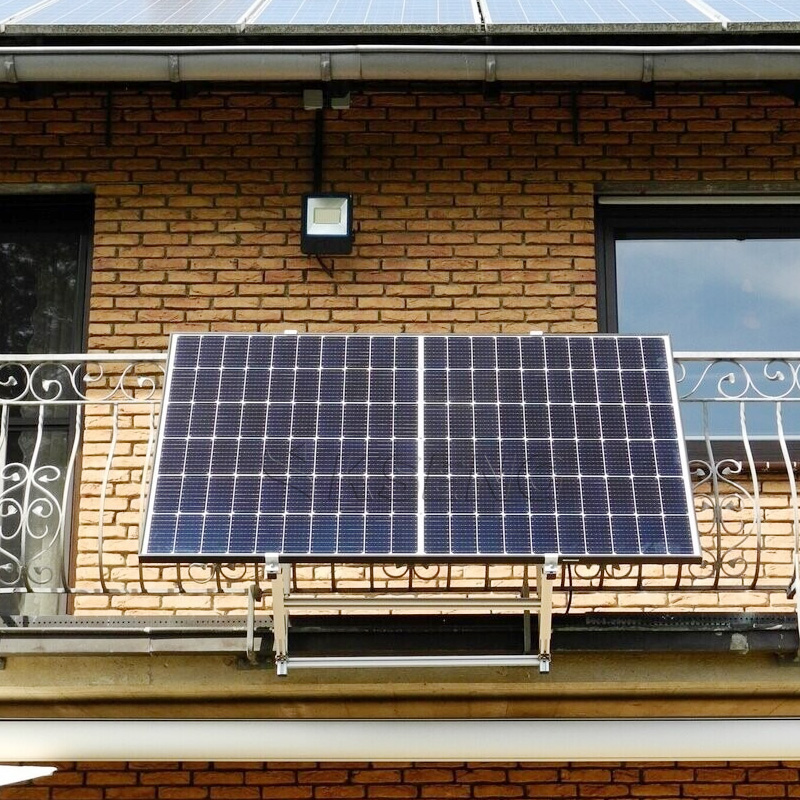Imagine you are sunbathing on your balcony in summer, enjoying a cold drink from the fridge and, at the same time, generating electricity. And all you need to do it is a balcony or patio and a balcony power plant kit.
But to what extent does a solar balcony power plant differ from a photovoltaic roof mounting system (PV system) on the roof? A balcony power plant and a PV system are both types of solar plants, which use solar energy to generate electricity. The main difference, however, is in size and performance. A balcony power plant is usually smaller with a maximum output of 600 watts (inverter output) and is therefore better suited for personal consumption. PV systems, on the other hand, are often installed on the roofs of commercial or industrial facilities or in open spaces. Due to their size and the accompanying higher output, with PV systems, the generated electricity is often not only used for personal consumption but is also fed into the electricity grid.

Personal electricity from your balcony solar
Producing solar power yourself is quite simple. The solution: a balcony power plant. A balcony power plant is a type of mini solar power plant that can be installed on a balcony or patio. It consists of a series of solar modules (comprised of photovoltaic cells) that work in conjunction with an inverter and other components to generate electrical power from sunlight. The direct current it generates is converted into alternating current by the inverter. The solar module is connected to your home’s mains via a plug connected to the power socket. This allows the self-produced alternating current to directly supply your refrigerator, television or other devices that use electricity with power. In this case, less electricity is drawn from your electricity supplier, which means the numbers on the electricity meter go up more slowly. But no need to worry. If there is a cloud or dark days when the balcony power plant produces little or no electricity, your electricity supplier will supply you with electricity as usual. But even in situations like these, a balcony power plant can produce electricity with the help of a battery. This is because on sunny days, the balcony power plant can be used in tandem with a battery to store electricity for later. A regulator ensures that the balcony power plant’s output stays in the optimal range while at the same time protecting against overloading and overheating.
What are the advantages and disadvantages of balcony power plants?
The advantages of a balcony power plant
Saves space: Balcony power plants can be installed in a limited area and therefore require less space than large solar plants.
Cost-efficient: Balcony power plants are typically smaller and simpler than large solar plants, which makes them more cost-efficient.
Independence from the electricity supply: By generating your own electricity, you can become less dependent on the public electricity supply.
Environmentally friendly: Using solar energy to generate electricity is an environmentally friendly alternative to using fossil fuels. In addition, the balcony power plant can be easily dismantled and transported when you move out. This gives you the flexibility to generate your own electricity for personal consumption in your new flat or house, meaning you do not have to buy a new system.